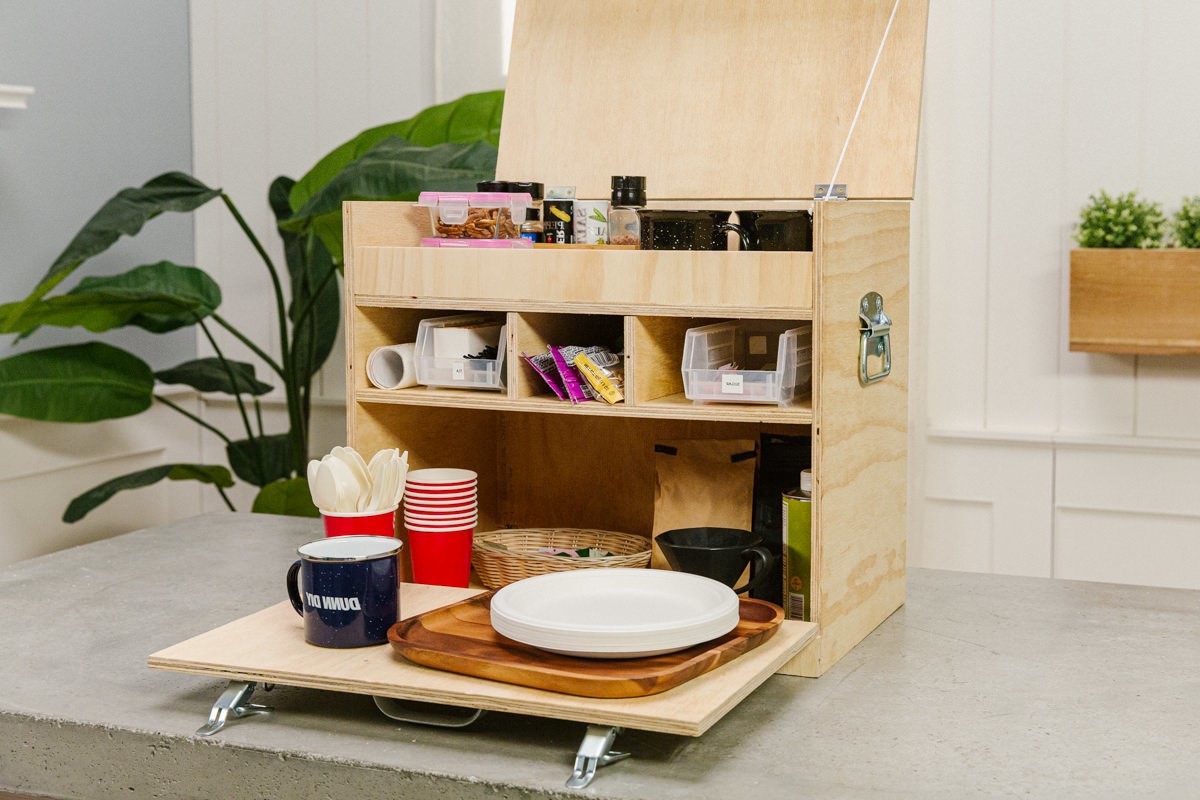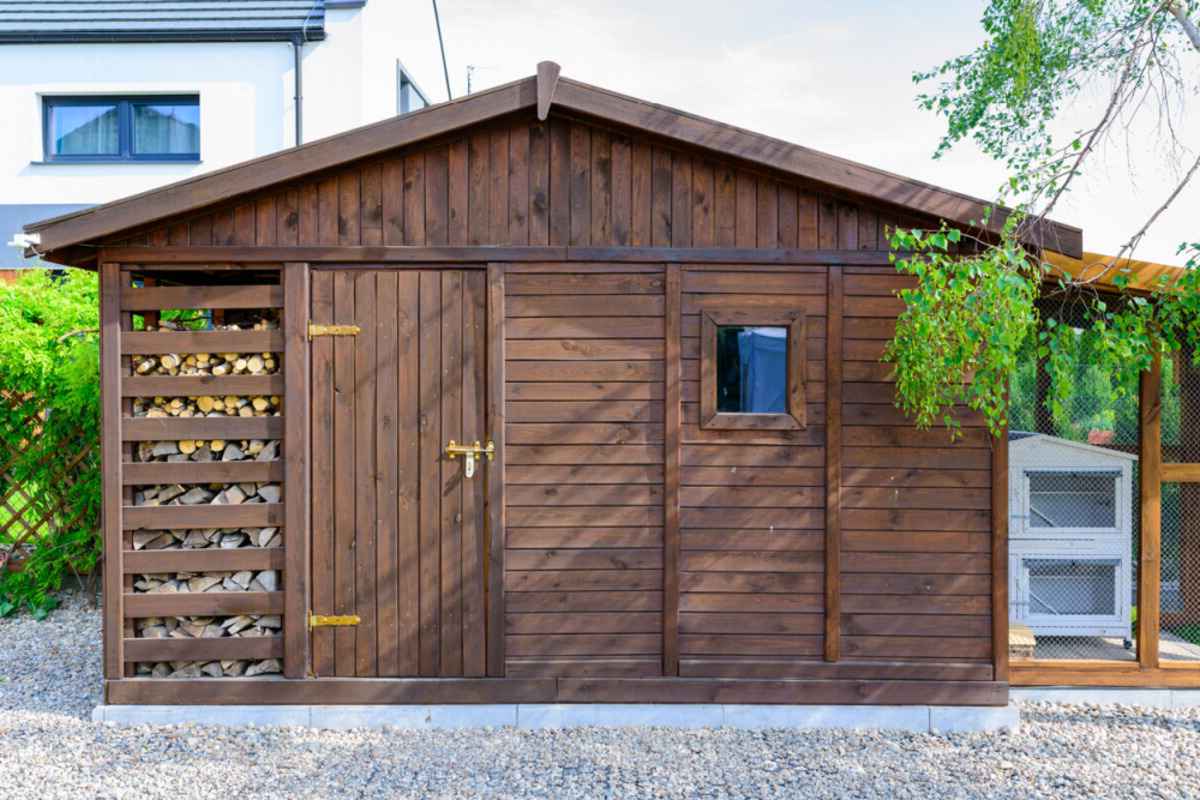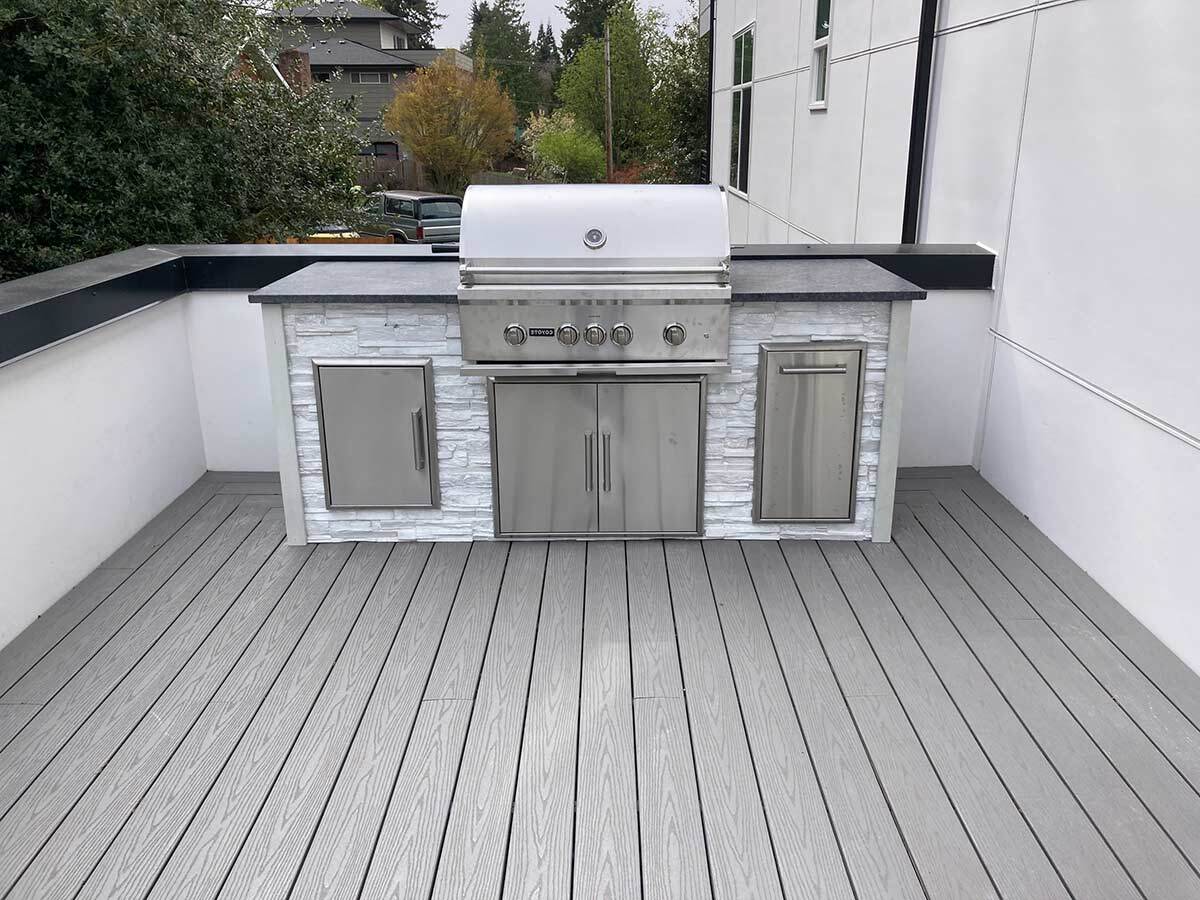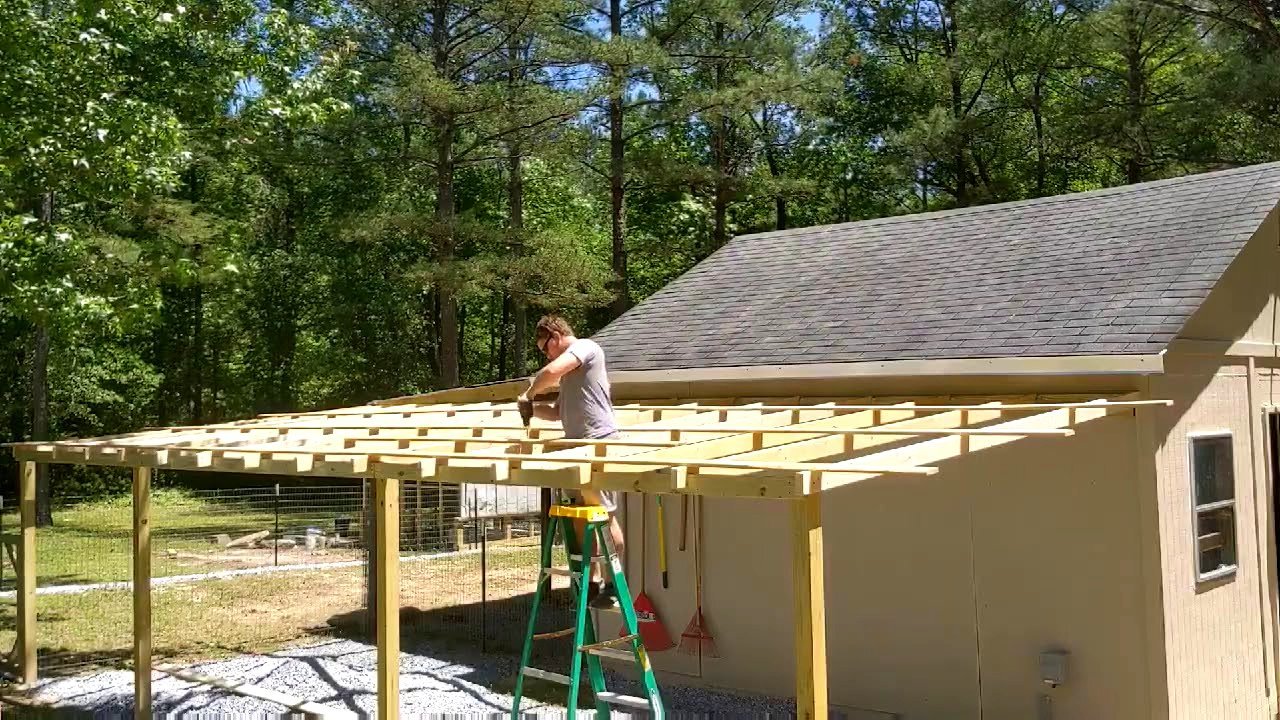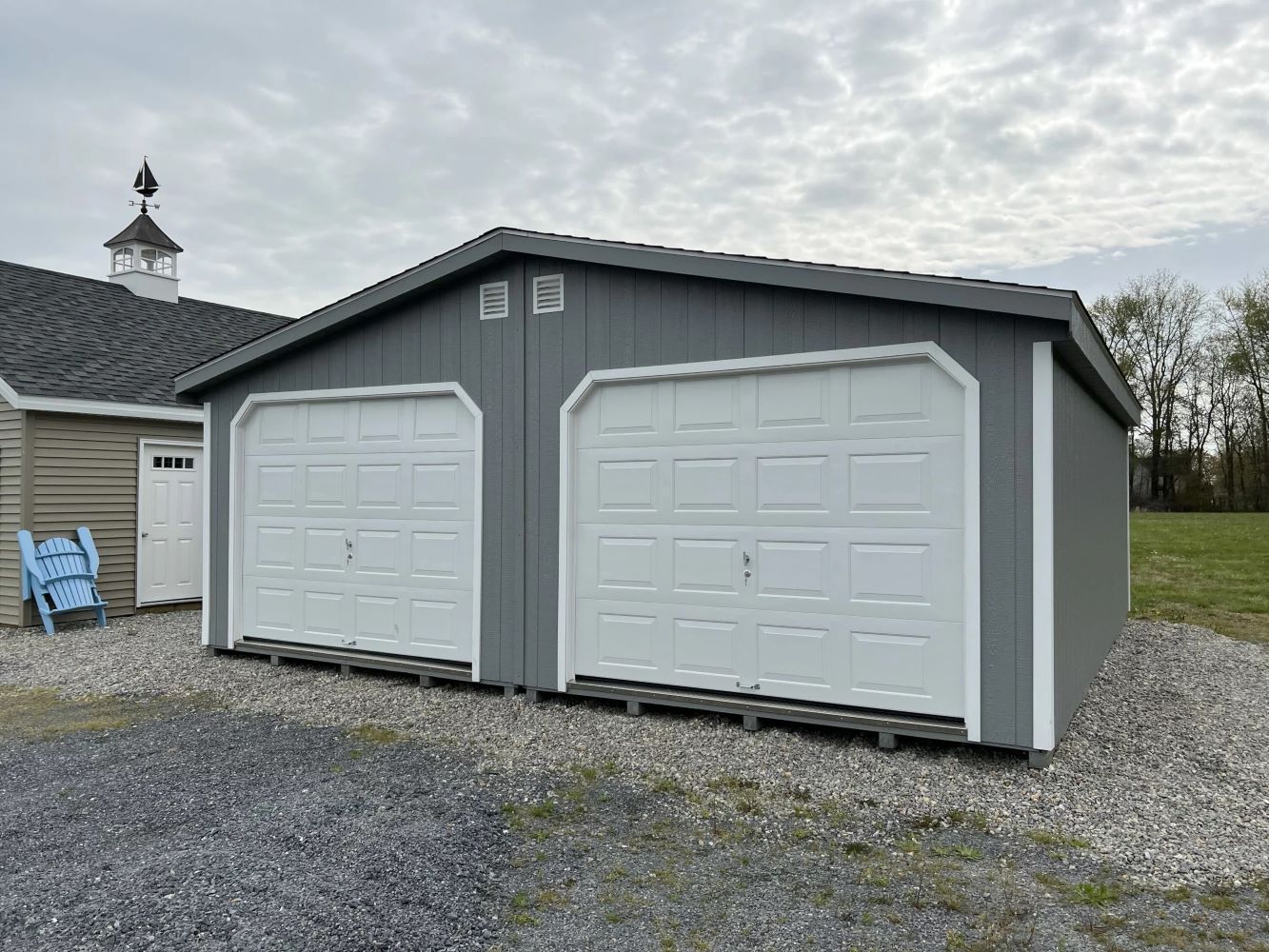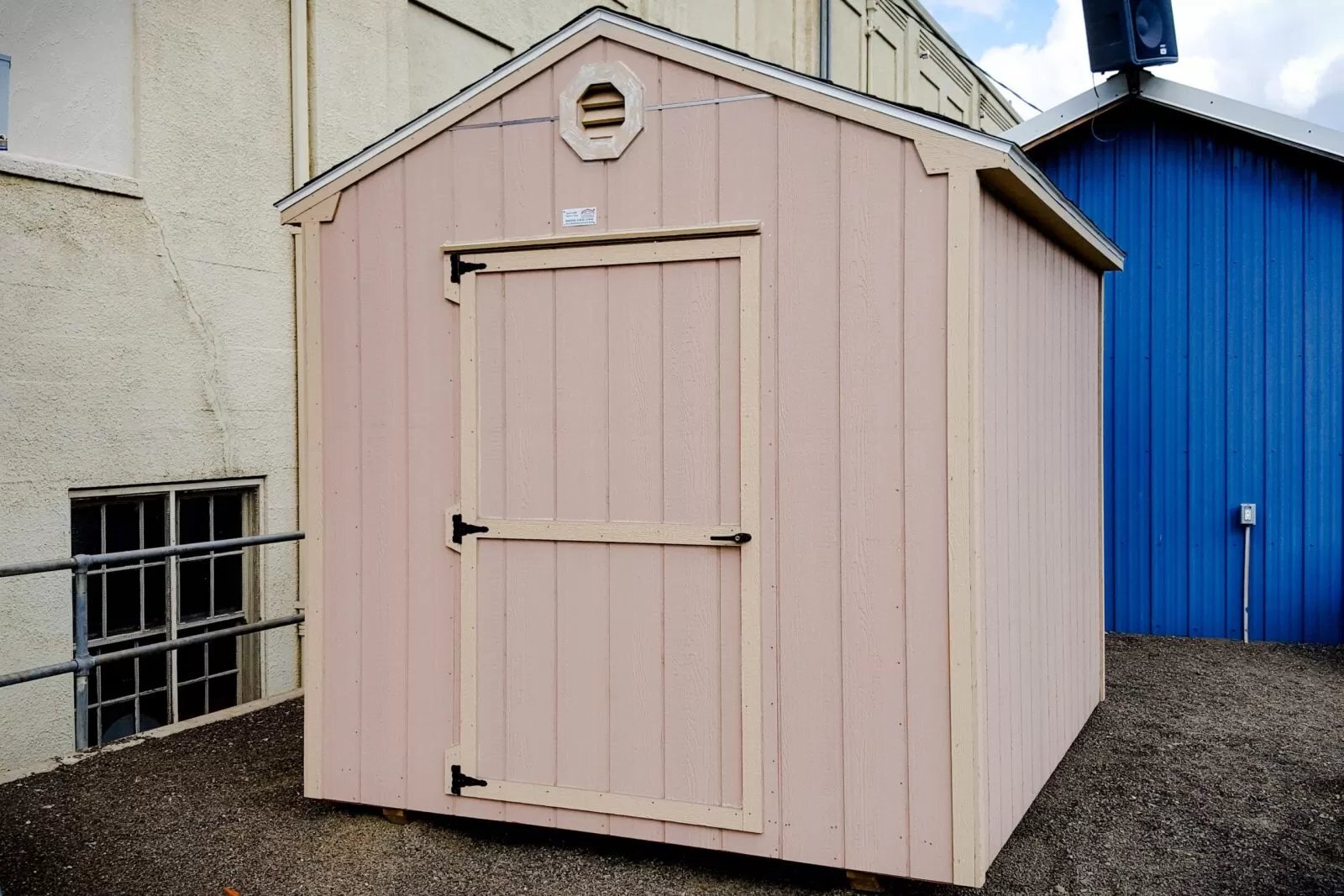Home>Create & Decorate>DIY & Crafts>6×6 Shed Plans: DIY Guide To Building Your Own Storage Shed
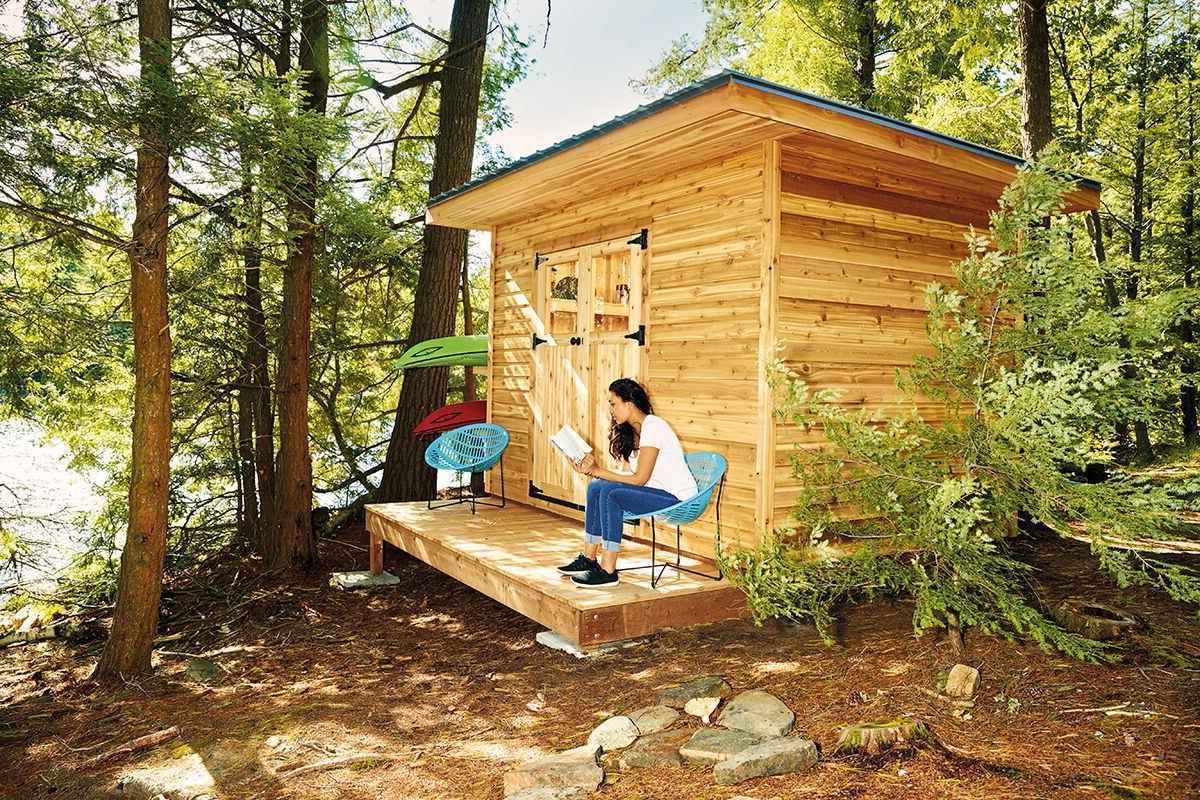

DIY & Crafts
6×6 Shed Plans: DIY Guide To Building Your Own Storage Shed
Published: February 23, 2024

Content Creator specializing in woodworking and interior transformations. Caegan's guides motivate readers to undertake their own projects, while his custom furniture adds a personal touch.
Discover step-by-step 6x6 shed plans for building your own storage shed with this comprehensive DIY guide. Perfect for DIY & Crafts enthusiasts!
(Many of the links in this article redirect to a specific reviewed product. Your purchase of these products through affiliate links helps to generate commission for Twigandthistle.com, at no extra cost. Learn more)
Introduction
Welcome to the comprehensive DIY guide to building your own 6×6 storage shed! Whether you're a seasoned DIY enthusiast or a novice looking to embark on your first major construction project, this guide will provide you with the essential steps and tips to successfully construct a sturdy and functional storage shed.
A 6×6 shed is a versatile and practical addition to any property, offering ample space to store gardening tools, outdoor equipment, and other items that tend to clutter your home or yard. By following this guide, you'll be able to customize your shed to suit your specific storage needs and aesthetic preferences.
Building your own shed not only allows you to save on the costs associated with purchasing a pre-built unit but also provides a sense of accomplishment and pride in creating a structure that serves a practical purpose. Additionally, constructing a shed from scratch enables you to tailor its design and features to perfectly align with your unique requirements.
Throughout this guide, you'll learn how to select the ideal location for your shed, gather the necessary materials and tools, lay a solid foundation, construct a durable frame, add a weather-resistant roof and siding, install doors and windows, and apply finishing touches to ensure longevity and functionality. Additionally, you'll gain valuable insights into maintaining your shed to preserve its condition over time.
By the end of this guide, you'll be equipped with the knowledge and confidence to embark on this rewarding DIY project. So, roll up your sleeves, gather your tools, and let's dive into the exciting world of building your very own 6×6 storage shed!
Read more: DIY Garage Shed Plans Guide
Choosing the Right Location
Selecting the optimal location for your 6×6 storage shed is a crucial first step in ensuring its longevity and functionality. The chosen site should not only accommodate the shed's dimensions but also consider factors such as accessibility, sunlight exposure, and ground stability. Here's a detailed breakdown of the key considerations when choosing the right location for your shed:
Accessibility:
The shed should be conveniently accessible from your home or other frequently used areas of your property. Consider pathways, gates, and potential obstacles that may impede access during the shed's construction and future use. Additionally, ensure that the location allows for easy transportation of materials and tools during the building process.
Sunlight Exposure:
Opt for a location that receives an adequate amount of sunlight throughout the day. Ample sunlight not only helps to naturally illuminate the interior of the shed but also aids in preventing moisture buildup, which can lead to mold and deterioration of stored items.
Ground Stability:
The ground where the shed will be placed should be relatively level and stable. Avoid areas prone to pooling water or experiencing excessive ground movement, as these conditions can compromise the shed's structural integrity over time. If the ground is uneven, consider leveling it or implementing appropriate foundation adjustments to ensure a stable base for the shed.
Read more: DIY Teardrop Camper Kitchen Build
Property Boundaries and Regulations:
Before finalizing the location, be mindful of property boundaries and local regulations. Ensure that the chosen site complies with setback requirements and any other zoning restrictions. Additionally, consider the shed's proximity to neighboring properties to maintain a harmonious relationship with your neighbors.
Aesthetic Considerations:
While functionality is paramount, the shed's location should also complement the overall aesthetics of your property. Take into account the visual impact of the shed within its surroundings, considering factors such as landscaping, sightlines from the main residence, and its integration with the existing outdoor environment.
By carefully evaluating these factors and selecting a location that aligns with these considerations, you'll set the stage for a successful shed construction project. With the right location secured, you can proceed to the next steps of gathering materials and tools, laying the foundation, and bringing your 6×6 storage shed to life.
Gathering Materials and Tools
Gathering the necessary materials and tools is a pivotal phase in the construction of your 6×6 storage shed. By ensuring that you have all the required components and equipment at your disposal, you can streamline the building process and minimize interruptions. Here's a comprehensive breakdown of the essential materials and tools needed to embark on this exciting DIY project:
Materials:
-
Lumber: Acquire high-quality lumber in the appropriate dimensions to construct the shed's frame, walls, and roof. Opt for pressure-treated or weather-resistant lumber to enhance the shed's durability and longevity.
-
Fasteners: Stock up on galvanized screws, nails, and other fastening hardware to securely join the shed's components. Utilizing corrosion-resistant fasteners will safeguard the shed against rust and degradation.
-
Foundation Materials: Depending on your chosen foundation type, gather materials such as concrete blocks, gravel, or treated skids to establish a stable base for the shed.
-
Roofing Materials: Select roofing materials such as shingles, metal panels, or corrugated sheets to protect the shed from the elements. Ensure that the chosen roofing material aligns with your desired aesthetic and weatherproofing requirements.
-
Siding: Choose siding materials, such as plywood, oriented strand board (OSB), or vinyl siding, to enclose the shed's exterior walls. Opt for siding that offers resilience against moisture and environmental exposure.
-
Doors and Windows: If your shed design incorporates doors and windows, procure these components along with the necessary hardware for installation. Ensure that the doors and windows are appropriately sized to fit the shed's dimensions.
-
Sealants and Paint: Invest in high-quality sealants, caulks, and exterior paint to weatherproof and enhance the visual appeal of the shed. Select paint colors that complement your property's aesthetic while providing protection against UV rays and moisture.
Read more: How to Build a DIY Jeep TJ Roof Rack
Tools:
-
Power Tools: Equip yourself with essential power tools, including a circular saw, drill/driver, and a nail gun, to expedite the cutting and fastening processes during construction.
-
Hand Tools: Gather a comprehensive set of hand tools, such as hammers, screwdrivers, levels, tape measures, and utility knives, to facilitate precise assembly and adjustments.
-
Safety Gear: Prioritize safety by obtaining protective gear, including goggles, gloves, and a dust mask, to safeguard yourself during cutting, drilling, and construction tasks.
-
Ladder or Scaffolding: Depending on the shed's height, secure a stable ladder or scaffolding to access elevated areas during the construction of the frame, roof, and siding.
-
Workbench and Sawhorses: Set up a sturdy workbench and sawhorses to create a dedicated workspace for cutting lumber and assembling shed components.
By meticulously procuring these materials and tools, you'll lay a solid foundation for a successful shed construction endeavor. With the necessary resources at hand, you can seamlessly progress to the subsequent phases of building the foundation, constructing the frame, and bringing your 6×6 storage shed to fruition.
Building the Foundation
The foundation serves as the fundamental support system for your 6×6 storage shed, ensuring stability and longevity. The chosen foundation type should align with the shed's intended use, local building codes, and the specific characteristics of your property. Here's a detailed exploration of the key considerations and steps involved in building a robust foundation for your shed:
Foundation Types:
Before commencing the foundation construction, it's essential to evaluate the available options and select the most suitable foundation type for your shed. Common foundation types include:
-
Concrete Slab: Ideal for sheds requiring a solid and level base, a concrete slab offers exceptional durability and resistance to moisture. It involves excavating the site, preparing a formwork, pouring concrete, and ensuring precise leveling and curing.
-
Gravel or Treated Skids: This cost-effective foundation option involves laying pressure-treated skids or beams on a bed of compacted gravel. It provides adequate support for the shed while allowing for natural drainage and ventilation.
-
Concrete Blocks: Utilizing concrete blocks as piers or footings offers versatility in adjusting the shed's elevation and addressing uneven terrain. This method involves strategically placing and leveling the blocks to support the shed's structure.
Construction Process:
Once the foundation type is determined, the construction process can commence with the following steps:
-
Site Preparation: Clear the designated area of vegetation, debris, and obstructions. Use a level and string line to outline the foundation dimensions, ensuring squareness and precise alignment.
-
Excavation and Grading: For concrete slab foundations, excavate the site to the required depth, allowing space for the gravel base and concrete thickness. Ensure proper grading to facilitate water runoff and prevent pooling around the foundation perimeter.
-
Formwork and Reinforcement: If opting for a concrete slab, construct formwork using lumber and secure it in place. Install reinforcement, such as rebar or wire mesh, within the formwork to enhance the slab's strength and integrity.
-
Pouring and Finishing: Pour the concrete into the formwork, ensuring even distribution and consolidation. Use a screed to level the concrete surface and finish it with a trowel to achieve a smooth and uniform appearance.
-
Skid or Block Placement: For gravel or treated skid foundations, lay a compacted gravel bed and position the pressure-treated skids or concrete blocks according to the shed's layout and support requirements. Ensure proper spacing and alignment to evenly distribute the shed's weight.
-
Anchoring and Leveling: Secure the shed's base to the foundation using anchor bolts, brackets, or fasteners, depending on the foundation type. Use a level to ensure the shed's base is perfectly horizontal and adjust the foundation as needed.
By meticulously executing the foundation construction process, you'll establish a solid and reliable base for your 6×6 storage shed, setting the stage for the subsequent phases of constructing the frame, adding the roof and siding, and bringing your DIY shed project to fruition.
Read more: How to Build a DIY Garage Foundation
Constructing the Frame
Constructing the frame of your 6×6 storage shed is a pivotal phase that forms the structural backbone of the entire construction. The frame provides stability, support, and the framework for attaching the shed's walls, roof, and doors. Here's a detailed breakdown of the essential steps involved in constructing the frame of your shed:
Lumber Selection and Cutting
Begin by selecting high-quality lumber for the frame, ensuring that it is straight, sturdy, and suitable for outdoor use. Opt for pressure-treated or rot-resistant lumber to enhance the frame's durability. Once the lumber is acquired, carefully measure and cut the pieces according to the shed's design and dimensions. Utilize a circular saw and a miter saw to achieve precise cuts, ensuring that the components fit together seamlessly during assembly.
Wall and Roof Framing
The frame construction typically involves assembling the walls and roof trusses separately before integrating them into the overall structure. For the walls, position the cut lumber studs at the specified intervals, ensuring proper alignment and secure attachment using galvanized nails or screws. Incorporate headers and corner bracing to reinforce the wall frame and enhance its stability.
When constructing the roof trusses, follow the design specifications to create the triangular framework that will support the roof's weight. Ensure that the trusses are accurately assembled, with the necessary bracing and gussets to maintain structural integrity. Pay close attention to the angles and measurements to achieve a precise and uniform truss assembly.
Assembly and Erection
With the individual wall sections and roof trusses completed, proceed to assemble the frame components on the prepared foundation. Utilize temporary bracing and supports to secure the walls and trusses in their designated positions, ensuring that they are plumb, level, and aligned according to the shed's design plans. Once the frame components are properly positioned, secure them to the foundation and to each other using appropriate fasteners and hardware.
Door and Window Openings
During the frame construction, incorporate openings for doors and windows as per the shed's design requirements. Carefully measure and frame the designated areas for door and window installation, ensuring that they align with the shed's layout and functionality. Implement headers and additional framing support to accommodate the installation of doors and windows while maintaining the frame's structural integrity.
By meticulously executing the frame construction process, you'll establish a robust and reliable framework for your 6×6 storage shed, laying the groundwork for the subsequent phases of adding the roof and siding, installing doors and windows, and bringing your DIY shed project to fruition.
Adding the Roof and Siding
The addition of the roof and siding marks a significant milestone in the construction of your 6×6 storage shed, as it not only enhances the shed's structural integrity but also provides crucial protection against the elements. Here's a detailed exploration of the essential steps involved in adding the roof and siding to your shed:
Roof Installation
Begin by selecting the appropriate roofing material based on your shed's design, local climate, and aesthetic preferences. Common roofing options include asphalt shingles, metal panels, or corrugated sheets, each offering distinct advantages in terms of durability and weather resistance. Once the roofing material is chosen, proceed with the following steps:
-
Underlayment and Sheathing: Prior to installing the roofing material, apply a weather-resistant underlayment over the shed's roof sheathing to provide an additional barrier against moisture infiltration. Ensure that the underlayment is securely fastened and overlaps according to manufacturer guidelines to maximize its protective properties.
-
Roofing Material Installation: Whether you opt for shingles, metal panels, or other roofing materials, carefully follow the manufacturer's instructions for proper installation. Start from the bottom edge of the roof, overlapping the roofing material to facilitate water shedding and prevent leaks. Secure the roofing material using appropriate fasteners, ensuring uniform coverage and a tight seal.
-
Flashing and Ridge Cap: Implement flashing along roof intersections, valleys, and penetrations to prevent water seepage and reinforce the roof's waterproofing. Additionally, install a ridge cap along the peak of the roof to provide a protective seal and enhance the shed's overall weather resistance.
Siding Application
Selecting the right siding material is crucial in safeguarding the shed's exterior walls from moisture, wind, and other environmental factors. Common siding options include plywood, oriented strand board (OSB), or vinyl siding, each offering varying degrees of durability and visual appeal. Here's how to effectively apply siding to your shed:
-
Preparation and Priming: Prepare the exterior walls by ensuring they are clean, dry, and free from any debris or protrusions. Apply a primer to the walls to enhance the adhesion of the siding material and provide an additional layer of protection against moisture.
-
Siding Installation: Whether using individual panels or large sheets, carefully position and secure the siding material to the shed's walls, ensuring proper alignment and overlap between adjacent pieces. Utilize galvanized nails or screws to affix the siding, following the manufacturer's guidelines for spacing and fastening methods.
-
Sealing and Finishing: Once the siding is installed, seal the joints and edges with high-quality caulking to prevent water infiltration and enhance the shed's weatherproofing. Additionally, consider applying an exterior paint or protective finish to the siding to further fortify its resistance to UV exposure and moisture.
By meticulously executing the roof and siding installation process, you'll fortify your 6×6 storage shed against the elements while enhancing its visual appeal and longevity. With the roof securely in place and the siding providing a protective enclosure, your DIY shed project is poised to progress to the subsequent phases of installing doors and windows, adding finishing touches, and bringing your vision of a functional and aesthetically pleasing storage space to fruition.
Read more: How to Build a DIY Sprinter Roof Rack
Installing Doors and Windows
The installation of doors and windows in your 6×6 storage shed is a pivotal phase that not only enhances the shed's functionality but also contributes to its aesthetic appeal and overall usability. Properly installed doors and windows provide essential ventilation, natural light, and convenient access to the shed's interior, making it a more practical and inviting space. Here's a detailed exploration of the essential steps involved in installing doors and windows to complete your shed construction project:
Door Installation
-
Selecting the Right Door: Begin by selecting a sturdy and weather-resistant door that aligns with the shed's design and your specific requirements. Common options include pre-hung exterior doors or custom-built doors tailored to fit the shed's dimensions.
-
Preparing the Opening: Ensure that the door opening is accurately framed and squared, allowing sufficient clearance for the door to open and close smoothly. Install a durable door threshold to provide a seamless transition between the shed's interior and exterior.
-
Securing the Door: Position the door within the opening, ensuring that it is plumb and level. Secure the door in place using shims to maintain proper alignment and prevent binding. Attach the hinges and hardware according to the manufacturer's guidelines, ensuring that the door swings freely and securely latches when closed.
-
Weatherproofing and Sealing: Apply weather-stripping around the door perimeter to create a tight seal, preventing drafts and moisture infiltration. Additionally, install a door sweep to further enhance weather resistance and insulation, ensuring a comfortable and protected interior environment.
Window Installation
-
Choosing Suitable Windows: Select windows that complement the shed's design while offering adequate ventilation and natural light. Consider factors such as window size, operability, and weatherproofing features to ensure optimal functionality.
-
Preparing the Window Openings: Accurately frame the window openings, ensuring that they are square and level to facilitate seamless window installation. Install a sturdy window sill to support the window unit and provide a finished appearance.
-
Installing the Windows: Carefully position the windows within the openings, ensuring a snug fit and proper alignment. Secure the windows in place using appropriate fasteners, ensuring that they operate smoothly and provide a secure seal against the elements.
-
Sealing and Finishing: Apply exterior-grade caulking around the window perimeters to seal any gaps and prevent water intrusion. Consider adding window trim to enhance the visual appeal and weather resistance of the installed windows, creating a polished and cohesive exterior finish.
By meticulously executing the installation of doors and windows, you'll elevate the functionality, comfort, and visual appeal of your 6×6 storage shed, creating a welcoming and practical space for storage and various activities. With the doors providing convenient access and the windows offering natural light and ventilation, your DIY shed project is poised for completion, ready to serve as a valuable addition to your property.
Finishing Touches and Maintenance Tips
With the structural elements of your 6×6 storage shed in place, it's time to focus on the finishing touches that will enhance its functionality, aesthetics, and long-term durability. Additionally, incorporating maintenance tips will ensure that your newly constructed shed remains in optimal condition for years to come.
Read more: How to Build Built-In Cabinets
Finishing Touches
Interior Organization:
Consider adding shelving, hooks, and storage solutions to maximize the interior space and keep your belongings organized. Utilize vertical storage to make the most of the shed's compact footprint, allowing easy access to tools, equipment, and other items.
Lighting and Ventilation:
Install adequate lighting fixtures to illuminate the shed's interior, making it more functional, especially during evening tasks. Additionally, consider incorporating passive ventilation solutions such as vents or louvers to promote air circulation and prevent humidity buildup.
Exterior Enhancements:
Add decorative elements such as flower boxes, trim details, or a coat of exterior paint to personalize the shed's appearance and complement your property's aesthetic. These enhancements not only add visual appeal but also contribute to the shed's overall charm.
Maintenance Tips
Regular Inspections:
Schedule periodic inspections to assess the shed's structural integrity, roofing condition, and overall stability. Look for signs of wear, water damage, or pest intrusion, addressing any issues promptly to prevent further deterioration.
Weatherproofing Maintenance:
Regularly inspect and maintain the caulking, seals, and weather-stripping around doors, windows, and seams to ensure they remain effective in preventing water infiltration. Consider reapplying exterior paint or sealant as needed to protect the shed from UV exposure and moisture.
Pest Control Measures:
Implement preventive measures such as sealing gaps, installing screens on vents, and using pest-resistant materials to deter insects and rodents from nesting or causing damage to the shed's interior.
Seasonal Upkeep:
Adjust your maintenance routine based on seasonal changes. Clear debris from the roof and gutters, remove snow accumulation, and trim vegetation around the shed to prevent moisture retention and potential damage.
Foundation Maintenance:
Monitor the foundation for any signs of shifting, settling, or erosion. Address any issues promptly to maintain the shed's stability and prevent structural damage.
By attending to these finishing touches and implementing proactive maintenance practices, you'll ensure that your 6×6 storage shed remains a functional, visually appealing, and well-preserved asset on your property for years to come.

